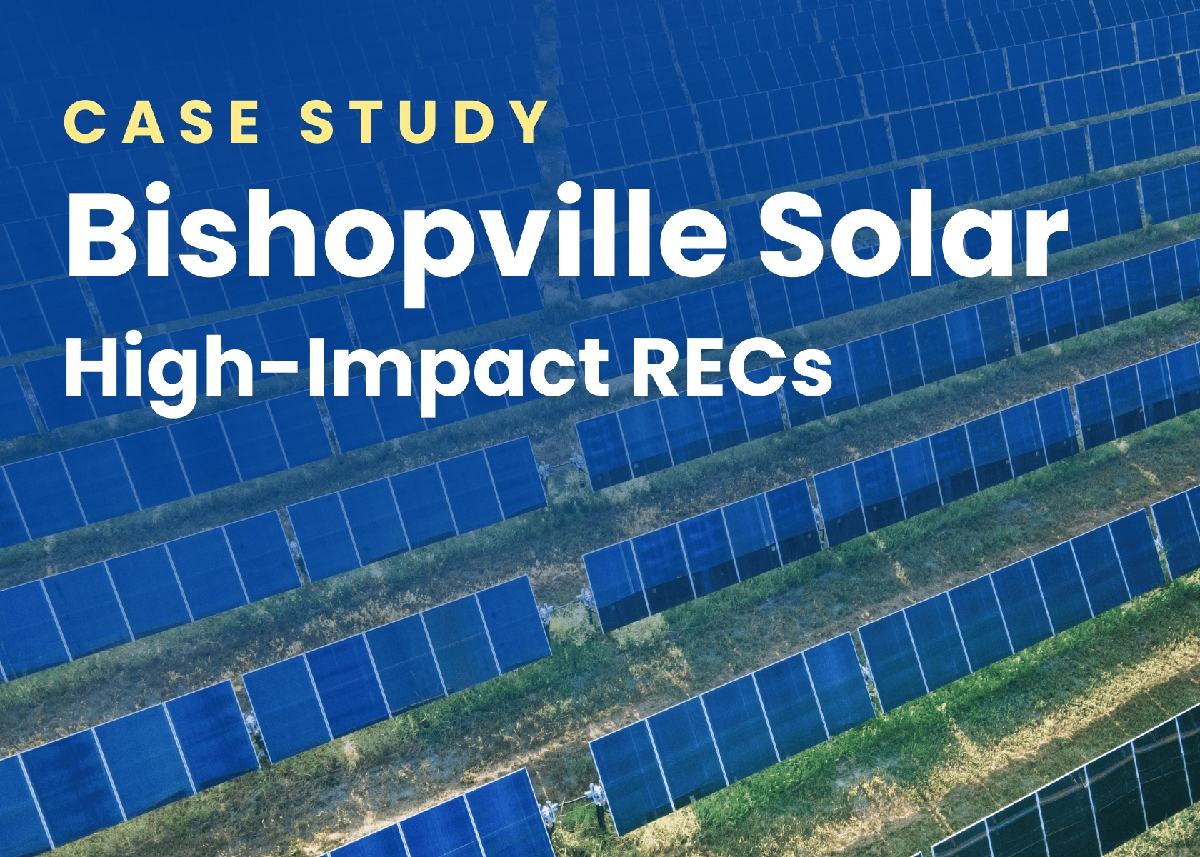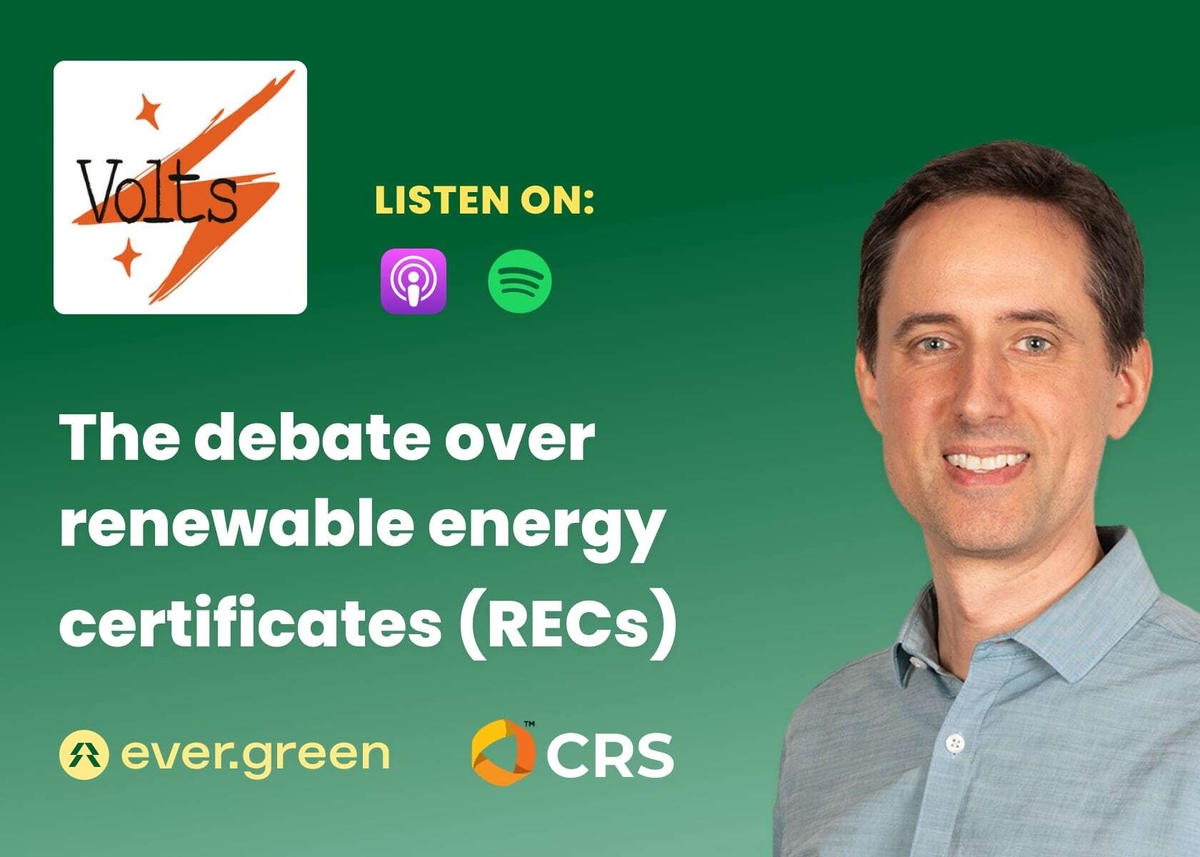How Ever.green retires RECs with detailed hourly metadata
We were the first to serialize and link individual RECs to key metrics including the time, location, corporate sponsor, avoided emissions, and wholesale energy price in retirement on ERCOT’s REC tracking system. Here’s how we did it.
Aug 22, 2024
Voluntary Renewable Energy Certificate (REC) markets, though integral to the transition to renewable energy, have significant structural challenges that undermine their effectiveness in stimulating the development of new renewable energy projects.
RECs represent proof that electricity was generated from a renewable energy source. Each REC represents one megawatt-hour (MWh) of renewable electricity fed into the grid. By purchasing and retiring RECs, companies can claim the environmental benefits associated with renewable energy generation and reduce their carbon footprint to contribute to their sustainability targets.
But not every REC is equal in impact and there is often not only little understanding of this variable impact, but also little to no paper trail connected to the RECs themselves to their impact. Numerous efforts to address these challenges are underway and they all depend on greater granularity, accuracy, and transparency of REC impact and retirement.
Ever.green’s approach to retiring RECs with detailed hourly metadata for each REC enhances their auditability, helping future-proof against ever increasing standards, and provides our clients with a clear and accurate picture of their renewable energy procurement.
Estimating impact
We’ve talked about where the current voluntary REC markets are ineffective and how to cure that by:
- Testing for additionality to ensuring corporate action makes a difference in bringing more projects online (see our methodology) and
- Understanding the impact a project has on the planet (see our Impact Scorecard)
These two areas are the foundation of how we think about impact at Ever.green:

Impact is not constant
Many aspects of a project’s impact on the planet cannot be accurately measured until the project is built and clean energy is delivered. And some metrics, such as how much pollution is avoided by injecting more clean energy at a specific time and place, change from minute to minute.
We work with partners like WattTime to estimate the actual impact of each MWh of clean energy and then associate it with every REC we retire. Some REC tracking systems like M-RETS are working to support this kind of detailed retirement and associated information. But many do not.
Details are not associated with all REC retirements
ERCOT’s tracking system is one of many that only track things like the technology and quarter of retirement but not much else.

Information like the project or any details provided in the optional Memo field are not published in ERCOT’s annual reports which only shows the volume retired that year and the REC account holder (which is often a REC broker and not the company claiming the RECs).

One possible solution is to export the RECs and import them into a different tracking system like M-RETS where they can be retired in more granularity. But Green-e requires the RECs be retired in the tracking system the project is located in whenever possible. This makes sense to us as it guards against double counting or errors, as ERCOT has direct knowledge of clean energy delivered to the grid. So for our ERCOT projects, we set out to retire the RECs in ERCOT’s tracking system with granular metadata about each REC.
Defining a REC serial number in ERCOT
While ERCOT does not associate RECs with an hour, they do have a numbering system they define in ERCOT Nodal Protocols, section 14.3.2.3:

This works well as the basis for a REC serial number, associating each REC with a unique number based on the location (facility), technology, and time (year and quarter).
To correctly assign serial numbers, we get the ERCOT validated generation data. With this in hand, we can quantify the impact of each REC and associate it with an hour and key metrics.
Hourly production = hourly RECs
For example, this is what one hour looks like on one of our ERCOT projects:
- Delivered 24.73 MWh of clean energy to the grid. Source: the ERCOT validated generation data.
- Avoided 13.5 tCO2 or 0.545 tCO2/REC. Source: WattTime’s estimated MOER or Marginal Operating Emissions Rate for the time and location.
- Earned $16.98 / MWh from the sale of energy into the wholesale market. Source: ERCOT publishes the settlement price for every node.
As we worked to serialize these 24.73 RECs, three key questions had to be answered:
- 1 REC = 1 MWh. What do we do with the 0.73 remainder? We rolled it forward into the next hour instead of having a fractional REC for the hour to more easily align with ERCOT’s numbering system. Fractional RECs would be a better long-term solution as this approach is less precise, especially on small projects where production may often be under 1 MWh / hour for most or all hours.
- Are RECs generated in series or parallel? We considered the 24 RECs generated in the hour to have been generated in parallel and all cover the full hour instead of in series with each REC representing all of the project’s production for only 2.5 minutes.
- How do we allocate the RECs among the 15 companies that supported the project? We tested many approaches and settled on a round-robin allocation in small batches that led to each company getting RECs across the entire quarter and an even distribution of avoided emissions.
The end result of this work is a ledger of each REC, its serial number along with the associated location, date, hour, wholesale energy price, avoided emissions, and company on behalf the REC was retired.

Connecting the dots in retirement
The final step was to retire the RECs in ERCOT’s tracking system.
To connect the dots and make verification possible, we published the detailed ledger of each REC and hourly metadata via a secret link specific to each customer and retirement so that they can share this with whomever they chose.
For each retirement on ERCOT's tracking system, we include a summary, the secret link to the full ledger, and a checksum of the CSV file to prove the file has not changed.
ERCOT will automatically associate each partial retirement with a REC number range which we are using for the serial numbers. You have to be careful about the order in which you retire the RECs to get these to align.
The end result is a memo with each retirement that looks like this:
Retired on behalf of Acme Inc: 1,234 Green-e certified RECs generated at the <Project name> between 1/1/2024 and 3/31/2024. Serial number range: 2024-1-WIND-122-00000001 through 2024-1-WIND-122-00001233 Full details available at: <https://ever.green/registry/secret_link> Unique file hash for serial numbers list: 3e0c7274fce0131cc5432b621c4f305d4e63f2630e9e1efd5819fd3ba396444a Download and confirm file is unchanged by recreating the same SHA256 hash in Mac Terminal, Windows Terminal, or an online tool.
Opening that secret link takes any verifier to the same full ledger for that company and retirement:

What’s next? Improving REC tracking systems
ERCOT’s REC tracking system is expected to be upgraded in the coming years in part to support the proposed 24/7 clean energy requirements for clean hydrogen incentives that start in 2028. We expect many other REC tracking systems to do the same.
We will continue to work with the tracking systems as they are upgraded, and seek to collaborate with any that are willing on future improvements to:
- Solidify and build into REC retirement systems a serial number system that associates each REC with a location, day, and hour.
- Support fractional RECs for more accurate hourly matching and retirement.
- Allow detailed information about each REC to be attached to retirements in REC retirement systems, along with any validation or reports of that information.
- Allow more transparency by letting companies opt into publishing retirements so auditors and the general public can see what is happening.
Ever.green’s integration of hourly data into ERCOT’s REC retirement sets a new benchmark for transparency and impact. By linking each REC to key metrics like time, location, and avoided emissions, we enable corporate buyers to better understand and verify their environmental claims. As REC tracking systems evolve, we’ll continue advocating for improvements that enhance transparency, making clean energy procurement more measurable, auditable, and impactful.






